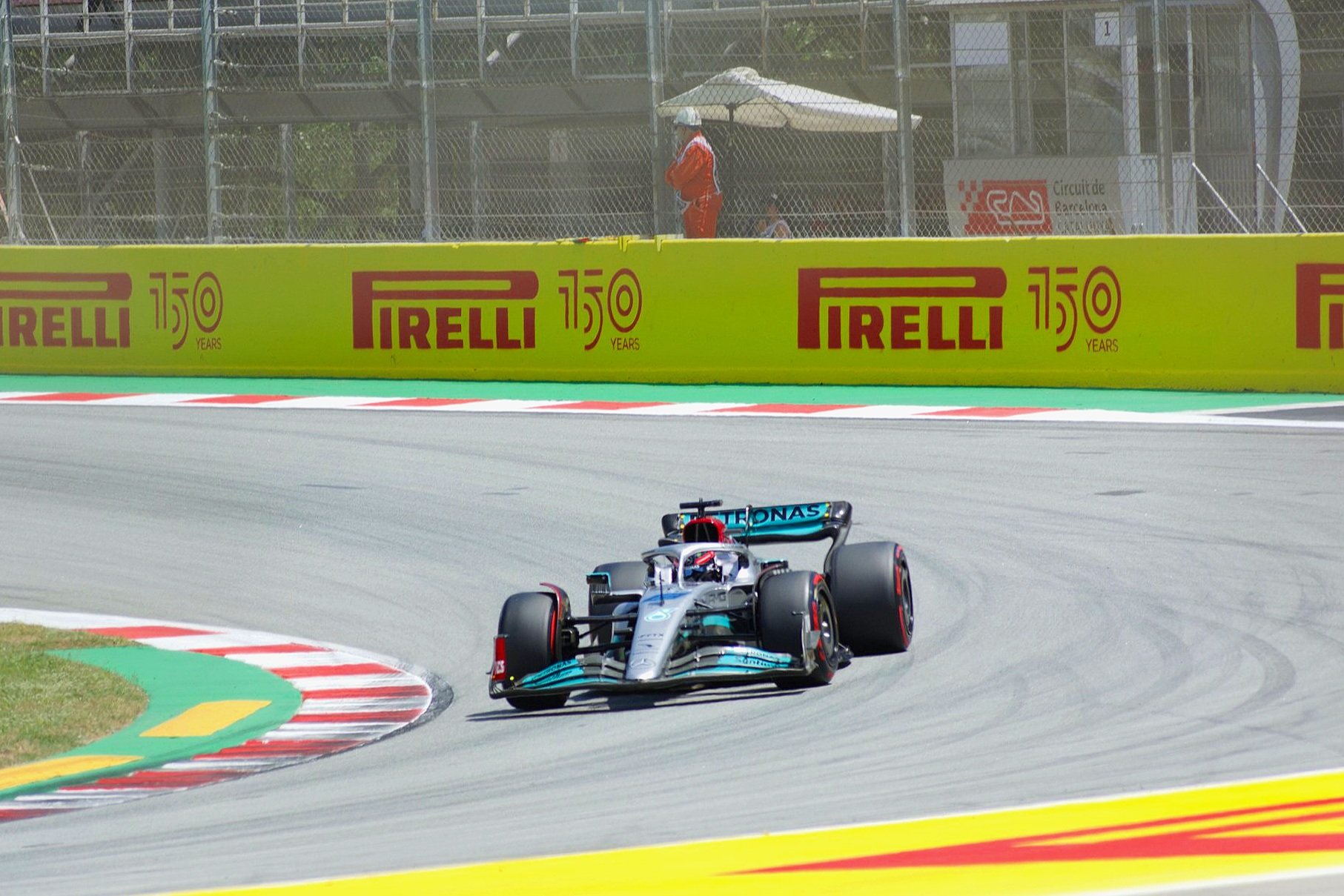Porpoising, bouncing, and bottoming out!
By now, F1 fans and pundits alike think they understand porpoising and the reasons why it occurs; Mercedes believes differently.
This generation of F1 cars has introduced an old term to the F1 colloquial vocabulary, "porpoising." The term was coined during the first ground-effect era in F1 when cars started to do the worm dance.
The effect is a by-product of the massive underside downforce that running a complex underside tray can generate. In essence, the lower the car runs, the most efficient the underside features work…until the point where air "stalls." In layman's terms, airflow is unable to go under the car, and all the downforce is lost; the vehicle's suspension brings the car back up to ride height, and the cycle restarts.
In the 80s, we saw the same phenomenon, and teams took many solution approaches to reduce their effects, from complex side skirts to active suspension that would allow cars to maintain the desired ride height, all of which are currently prohibited by current regulations. In addition, the mythical inertial damper or J-damper has also been eradicated from the rules in 2022 to reduce costs and force teams to develop "simpler suspension systems." Cars are currently limited to springs for each corner and a mechanical heave spring setup.
How did this happen?
We saw in pre-season testing that most teams struggled to cope with this phenomenon, as CFD and wind-tunnel testing have a tough time accounting for ride height change and the air stalling effect. One thing these two systems are great tools to determine the optimal ride height that should be maintained to maximize aero performance. All teams arrived at the same conclusion, let's run as low as a slammed Mazda Miata!
Intensifying the issue, 2022 brought a new tire fitment, 18-inch wheels. Low-profile tires with less give to them, taxing the brand new suspension systems to their absolute limits. Team and commentators alike talked about the easy solution to the issue in the form of a raised ride height to reduce the chance of stalling; this, in principle, would solve the problem, but at the cost of running the cars outside of their aero envelope. Downforce is not something teams are willing to lose, especially underbody downforce, as it comes with the slightest drag penalty.
Most teams encountering extreme examples of purposing took the high road. In contrast, Mercedes wasn't satisfied with ruining all their precise balancing work and decided on a secondary solution method of cranking up the stiffness of the suspension, virtually converting their car into a soapbox derby machine rattling their drivers apart. Solution?-maybe…
Mercedes reborn!
For the Spanish GP, we saw what everyone thought was a breakthrough in vehicle setup from Mercedes as they showed a remarkably gentle car that didn't exhibit all the purposing traits that had plagued them before. How had the team stabilized the aerodynamic platform that quickly and with few apparent changes?
Monaco was next, and as we all know, it behaves as a complete outsider to the rest of the calendar. The slow-speed nature of the city circuit was able to hide some of the issues of the W13; with Hamilton and Russel complaining about the bumps, the team achieved a solid result. Baku was next, and the team was in for an actual test as this city layout was the opposite of forgiving. High-speed and bumpy were the perfect combination to show the worst of Mercedes' diva!
The W13 issues were back, with Russell finishing a distant third 45 seconds behind the leading Red Bull and Hamilton showed clear signs of pain and discomfort as he climbed out. The team was quick to denounce that the purposing issues had been solved, but what the team was experiencing was something completely different, bouncing!
This bouncing is an unintended consequence of their setup direction, as their high stiffness approach had resulted in the suspension being unable to cope with undulations and irregularities of Baku, leading to the vehicle not only bouncing but bouncing off the surface, bottoming out!
The final piece of the puzzle came at their home track, Silverstone, where we saw the Mercedes again at its best. The one factor in common with Spain is a very even track surface that allowed Mercedes to run their car inside their aero-envelope with a stiff suspension, killing porpoising, bouncing, and bottoming out. I expect them to experience this up and down trend throughout the season.
For the sake of the sport, I sincerely hope they can get ahold of the root of their issue and add that extra spice to each race. If the team at Brackley is reading, I would like them to be given a chance to solve the issues through engineering and outside of politics. Little by little, the Ferrari and Red Bull solutions are being exposed, and the eight-time on-the-trot constructor world champion will find its way.
One thing is certain; this British GP weekend showed what a three-horse race with 2022 machinery can deliver, absolutely superb racing!



